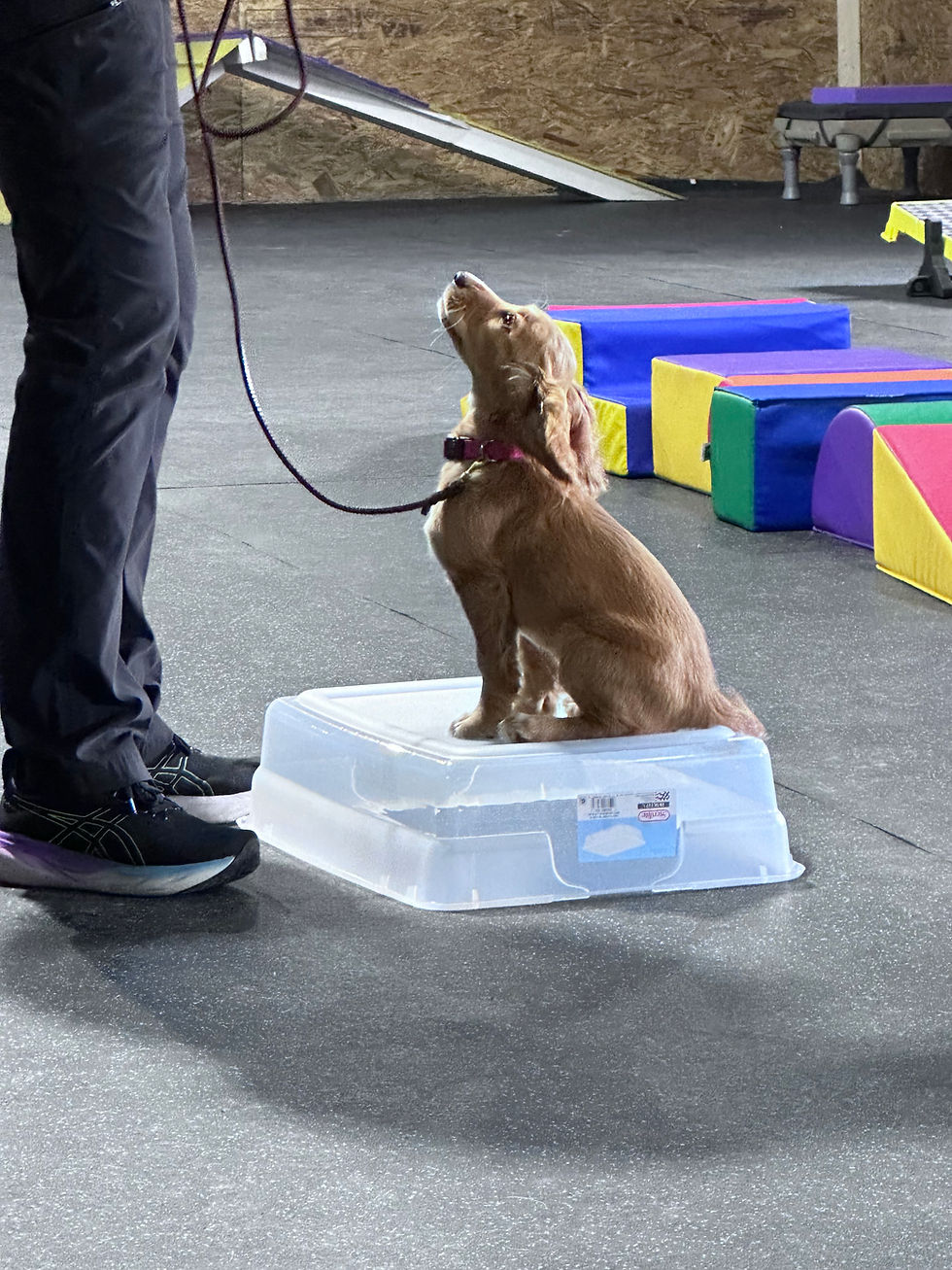Rehearsal, Management, and the Dog Training Playlist You Didn’t Know You Were Creating
- Jun 28
- 3 min read
Updated: Aug 10
Your Dog’s Behavior Is a Playlist in Progress

Every single thing your dog does is a track on their internal behavior playlist. Just like Spotify, the dynamics of this playlist depend on repetition and reward:
The more a behavior gets played, the higher it climbs the charts.
The more consistently it’s rewarded, the more likely it is to hit “repeat.”
And once it becomes a favorite? It’s the one they go back to again and again.
If your dog rehearses jumping on guests, pulling on the leash, or barking at the window, those are the songs (behaviors) topping the charts. If they’re calmly settling on a bed, walking nicely beside you, or checking in regularly, those behaviors are climbing the ranks, but only if they get airplay and positive reviews.
Rehearse the Good Tracks, Skip the Noise
The key is this:
Dogs become what they rehearse. They do more of what they practice, and they practice what they’re allowed to do.
That means it’s your job to:
Reinforce the behaviors you want on repeat.
Block access to the behaviors you don’t want on the playlist.
Let’s say your dog is a chronic counter-surfer (a very hard track to get rid of). That track has been played a lot. You’ll need to:
Skip the track (no more unsupervised access to the kitchen).
Add a better one to the rotation (reward “four paws on the floor”).
Keep repeating it until that becomes their new jam.
Management Is Your Playlist Editor
What if your dog’s playlist is a bit… chaotic? This is where management comes in.
Management is about limiting your dog’s access to “bad tracks” while helping them build a solid playlist of great choices.
Here is a common scenario:
Your Dog’s Current Playlist:
Track 1: “Bark at the Delivery Driver”
Track 2: "Pulling When on Leash"
Track 3: “Zoomies in the Training Ring”
Track 4: “Calm Check-in with Handler”
If your dog keeps choosing Tracks 1 or 2, those are what they’re practicing. And practice makes permanent.
Management means hiding Tracks you don't want (1, 2, and 3), so they don’t get airtime. Use strategies like:
Close the blinds to block distractors.
Use a Freedom Harness or Gentle Leader when walking.
Keep toys handy during training to maintain focus.
Set up an environment where only the “calm check-in” track plays. The more they “listen” to that one, the more it becomes their favorite.
When Management Skips a Beat
Even the best DJ misses a cue sometimes. When your dog’s about to hit “play” on a behavior you don’t want—like grabbing a sock or lunging at another dog—you need a way to interrupt them.
An attention-getting noise can work wonders. Think of it like a scratch on the record. It’s a quick, unique sound that interrupts the behavior before it gets added to their Top 10.
When your dog responds to your attention noise:
Immediately reward them for turning to you.
Redirect them to a better behavior (grab a toy, hop on their bed, or play fetch).
Use management to prevent that track from getting played again (put the sock away next time, close the blinds).
You just helped them skip the song before it finishes, and that keeps it from gaining traction and climbing the charts.

Build the Playlist You Want to Hear
Over time, the goal is to fill your dog’s playlist with hits:
Calmness in new places? Play it again.
Loose-leash walking? Put it on loop.
Ignoring distractions? That’s a classic.
The tracks you don’t want? Skip them. Block them. Don’t let them get airtime. When they stop getting rehearsed, they fade into obscurity.
Eventually, your dog won’t even look for those unwanted behaviors—they will be off the charts.
The Importance of Positive Reinforcement
Positive reinforcement is crucial for dog training success. It helps your dog understand what behaviors get them positive attention. By encouraging good behaviors, you create an environment based on rewards instead of punishment.
This method can help you build a strong bond with your furry friend. Plus, it makes training more enjoyable for both of you.
Final Takeaway: You’re the Producer
You’re not just training your dog; you’re producing their behavioral soundtrack. Every day, you decide what gets added to the mix, what gets skipped (management), and what gets played on repeat (rehearsal).
So, ask yourself:
What kind of playlist are we creating today?
Start reinforcing the good tracks, managing access to the bad ones, and watching your dog become the best version of themselves—one great choice at a time.
To enhance your dog training journey, remember that effective communication with your dog is essential. It helps you both understand each other better.
Subscribe to our blog for more dog training tips and check out our Smart Start Puppy and Canine Good Citizen Classes to help get your dog on the right track!




